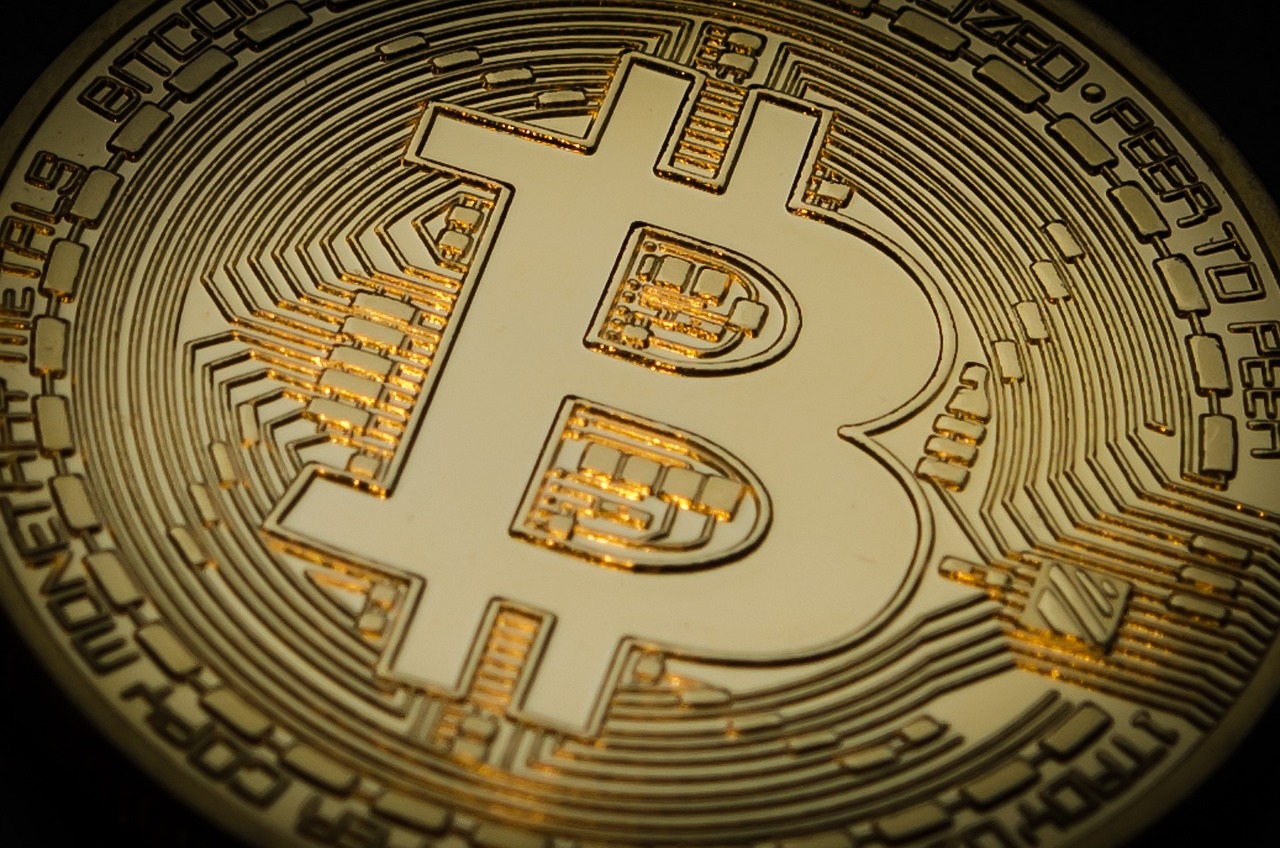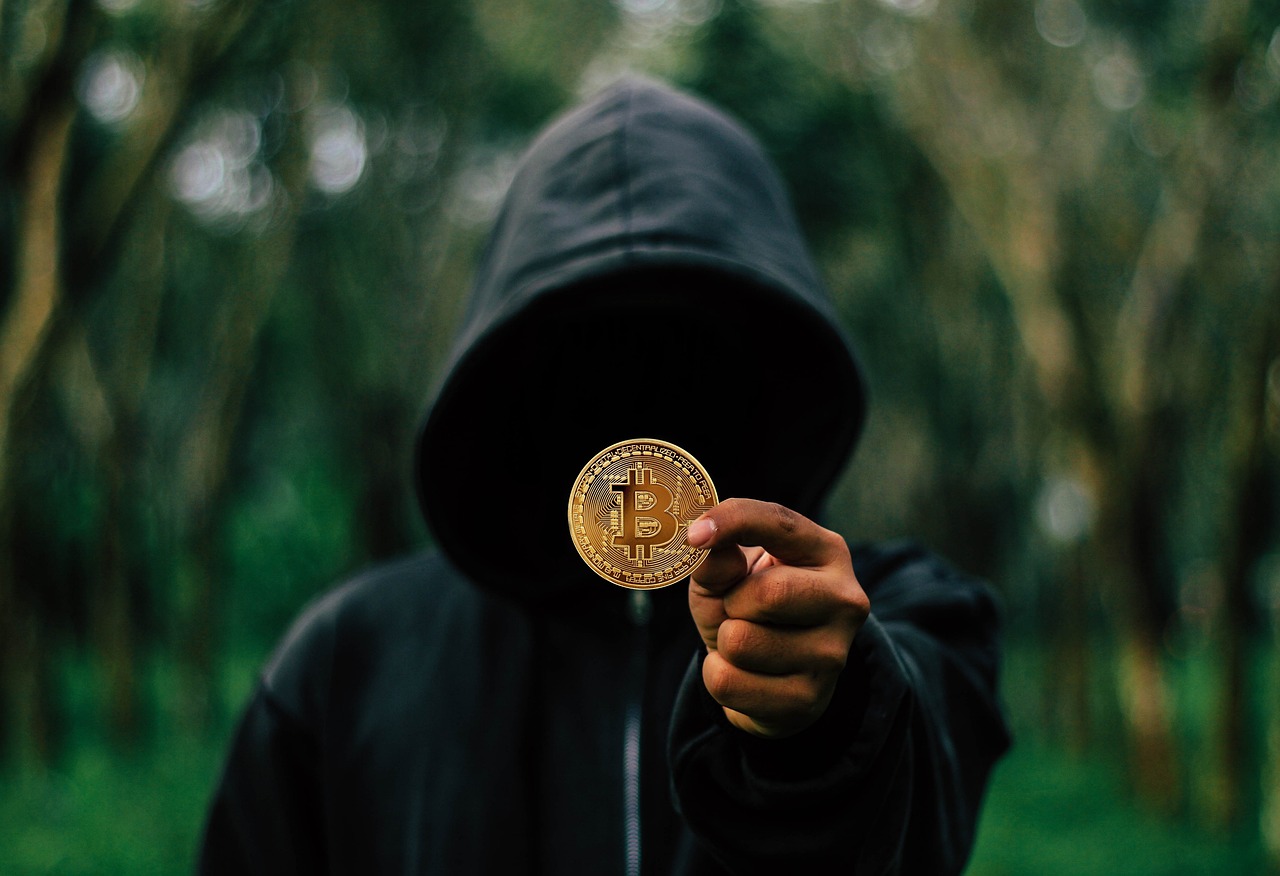Wanchain - Decentralizing Financial Services
In today's fast-paced digital world, the traditional financial services landscape is undergoing a seismic shift. Enter Wanchain, a groundbreaking platform that is redefining how we think about finance. Imagine a world where your digital assets can effortlessly flow across various blockchain networks, much like water through interconnected rivers. Wanchain is making this vision a reality, providing a robust framework for seamless asset transfers and enhancing the decentralized finance (DeFi) ecosystem.
At its core, Wanchain is not just another blockchain; it’s a comprehensive solution designed to tackle the limitations of existing financial systems. By promoting interoperability, Wanchain allows users to interact with multiple blockchain networks, breaking down the silos that have historically hindered asset liquidity. This innovation paves the way for a more inclusive financial landscape, where anyone, anywhere can participate in decentralized finance without the barriers imposed by traditional banking systems.
Wanchain’s approach is akin to constructing a bridge between islands of financial opportunity, enabling users to explore and leverage diverse blockchain ecosystems. As we delve deeper into the features and benefits of Wanchain, it becomes clear that this platform is not just a fleeting trend; it’s a powerful catalyst for change in the financial services sector.
As we navigate through the intricacies of Wanchain, we'll uncover how its features, such as cross-chain transactions, privacy protection, and smart contract functionality, collectively enhance its usability in decentralized finance applications. So, buckle up as we explore the transformative potential of Wanchain and its impact on the future of finance!

Understanding Wanchain
This article explores Wanchain's role in revolutionizing financial services through blockchain technology, highlighting its features, benefits, and potential impact on the future of decentralized finance.
Wanchain is not just another blockchain platform; it’s a groundbreaking solution designed to facilitate the seamless transfer of digital assets across various blockchain networks. Imagine trying to connect different islands with bridges, where each island represents a unique blockchain and the bridges symbolize Wanchain’s technology. This platform promotes interoperability and enhances the decentralized finance (DeFi) ecosystem, allowing users to navigate through multiple blockchains effortlessly.
At its core, Wanchain aims to address a major pain point in the cryptocurrency world: the lack of connectivity between different blockchain networks. Traditional blockchains often operate in silos, which can limit the liquidity and usability of digital assets. Wanchain breaks down these barriers by enabling users to transfer assets across chains, thereby unlocking a world of opportunities. With Wanchain, users can enjoy a more fluid experience, akin to having a universal currency that can be spent anywhere without conversion hassles.
One of the standout features of Wanchain is its ability to facilitate cross-chain transactions. This means that users can transfer their digital assets from one blockchain to another without the need for intermediaries or complex processes. Picture this as a direct highway that connects various cities (blockchains), allowing for quick and efficient travel (asset transfer) between them. By enhancing liquidity and accessibility, Wanchain empowers users to leverage diverse opportunities across different blockchain ecosystems.
Moreover, Wanchain incorporates advanced privacy features, such as zero-knowledge proofs, which ensure that transactions remain confidential. In a world where data breaches and privacy concerns are rampant, Wanchain provides a secure environment for users to transact without fear of exposing their sensitive information. This is especially crucial in the DeFi landscape, where anonymity and security are paramount for user trust.
In summary, Wanchain is paving the way for a more interconnected and user-friendly decentralized finance ecosystem. By focusing on interoperability, privacy, and seamless asset transfer, it stands out as a revolutionary platform that could redefine how we think about financial services in the digital age.
Wanchain offers several innovative features, including cross-chain transactions, privacy protection, and smart contract functionality, which collectively enhance its usability in decentralized finance applications.
Cross-chain transactions enable users to transfer assets between different blockchain networks, solving the issue of asset liquidity and enhancing the overall efficiency of decentralized finance.
The ability to conduct cross-chain transactions increases asset accessibility and liquidity, allowing users to leverage opportunities across various blockchain ecosystems.
Despite its advantages, cross-chain transactions face challenges such as security risks and the complexity of integrating different blockchain protocols, which must be addressed for broader adoption.
Wanchain's privacy features, including zero-knowledge proofs, ensure that transactions are secure and confidential, addressing concerns related to user anonymity in the decentralized finance landscape.
Smart contracts on Wanchain automate processes and enforce agreements, providing a trustless environment for users to engage in financial transactions without intermediaries.
Smart contracts increase efficiency and reduce costs in financial transactions, allowing for faster execution and minimizing the risk of human error in contract enforcement.
Various use cases exist for smart contracts on Wanchain, including decentralized lending, insurance, and asset management, showcasing the platform's versatility in financial services.
Wanchain's innovative solutions contribute significantly to the growth of decentralized finance, enabling new financial products and services that empower users and reduce reliance on traditional financial institutions.
The future of decentralized finance looks promising with Wanchain's advancements, as more users seek alternatives to conventional banking, driving demand for decentralized solutions and financial inclusivity.
Despite its potential, decentralized finance faces challenges such as regulatory scrutiny and security vulnerabilities, which need to be addressed to ensure sustainable growth and user confidence.
1. What is Wanchain?
Wanchain is a blockchain platform designed to facilitate the transfer of digital assets across different blockchains, enhancing interoperability in the decentralized finance ecosystem.
2. How do cross-chain transactions work?
Cross-chain transactions allow users to transfer assets from one blockchain to another seamlessly, increasing liquidity and accessibility.
3. What are the privacy features of Wanchain?
Wanchain employs zero-knowledge proofs to ensure transaction confidentiality and protect user anonymity.
4. How do smart contracts function on Wanchain?
Smart contracts on Wanchain automate financial transactions and enforce agreements without the need for intermediaries, increasing efficiency and reducing costs.

Key Features of Wanchain
Wanchain stands out in the crowded blockchain space due to its innovative features that cater specifically to the needs of decentralized finance (DeFi). One of its most remarkable attributes is its ability to facilitate cross-chain transactions. This feature allows users to seamlessly transfer digital assets across various blockchain networks, which is crucial for enhancing liquidity and ensuring that assets can be utilized efficiently. Imagine being able to move your cryptocurrencies from one blockchain to another as easily as sending an email—this is the kind of convenience Wanchain offers!
Another important feature is Wanchain's robust privacy protection mechanisms. Utilizing advanced technologies like zero-knowledge proofs, Wanchain ensures that transactions remain confidential, addressing the growing concerns surrounding user anonymity in the DeFi landscape. This is particularly critical in a world where data breaches and privacy violations are rampant. With Wanchain, users can have peace of mind knowing that their financial activities are shielded from prying eyes.
Moreover, Wanchain is built on a foundation of smart contract functionality. Smart contracts automate processes and enforce agreements without the need for intermediaries, making transactions not only faster but also more cost-effective. It’s like having a digital butler that handles your financial dealings, ensuring everything is executed flawlessly without human error. This automation is a game-changer in the financial sector, where speed and reliability are paramount.
To summarize, Wanchain's key features can be encapsulated in the following table:
| Feature | Description |
|---|---|
| Cross-Chain Transactions | Enables seamless transfer of assets across different blockchains, enhancing liquidity and efficiency. |
| Privacy Protection | Utilizes zero-knowledge proofs to ensure transaction confidentiality and user anonymity. |
| Smart Contracts | Automates financial processes and agreements, reducing the need for intermediaries and minimizing errors. |
In addition to these standout features, Wanchain continuously evolves to address the needs of its users. It’s not just about having the latest technology; it’s about creating a user-friendly experience that empowers individuals to take control of their financial futures. With Wanchain, the possibilities for innovation in decentralized finance are limitless, paving the way for a more inclusive and efficient financial ecosystem.
- What is Wanchain? Wanchain is a blockchain platform designed for the seamless transfer of digital assets across different blockchains, enhancing interoperability.
- How do cross-chain transactions work? Cross-chain transactions allow users to transfer assets between different blockchain networks, addressing liquidity issues and improving efficiency.
- What are zero-knowledge proofs? Zero-knowledge proofs are cryptographic methods used to ensure transaction confidentiality, allowing one party to prove to another that a statement is true without revealing any information beyond the validity of the statement.

Cross-Chain Transactions
Cross-chain transactions are like the bridges that connect different islands in the vast ocean of blockchain technology. Imagine wanting to send a message to a friend on a different island, but the only way to do so is through a complicated system of boats and maps. That’s how traditional blockchain networks operate—isolated and limited. However, Wanchain breaks down these barriers, allowing users to seamlessly transfer assets across various blockchain networks. This revolutionary approach not only enhances liquidity but also opens up a world of opportunities for users to engage with multiple decentralized finance (DeFi) platforms.
One of the most significant benefits of cross-chain transactions is the increased accessibility to a diverse range of digital assets. By enabling users to move their assets freely between blockchains, Wanchain empowers them to capitalize on the unique offerings of each network. For instance, you might want to take advantage of a specific DeFi protocol that only exists on Ethereum while holding your assets on Binance Smart Chain. With Wanchain, this transfer is not only possible but also efficient, making the entire process feel as smooth as a well-oiled machine.
However, it's essential to recognize that while cross-chain transactions offer numerous advantages, they also come with their own set of challenges. Security risks are a primary concern, as transferring assets between different blockchains involves navigating various protocols, each with its own vulnerabilities. Additionally, the complexity of integrating these different systems can lead to potential failures or errors during the transaction process. Therefore, addressing these challenges is crucial for the broader adoption of cross-chain functionalities in the DeFi ecosystem.
To better understand the impact of cross-chain transactions, let’s look at a few key aspects:
- Liquidity Enhancement: By allowing assets to flow freely between blockchains, Wanchain significantly boosts liquidity, making it easier for users to buy, sell, or trade their digital assets.
- Broader Market Access: Users can access a wider range of financial products and services, tapping into the strengths of various blockchain ecosystems.
- Interoperability: Cross-chain transactions foster a more interconnected DeFi landscape, where users can benefit from the unique features of each blockchain.
In conclusion, cross-chain transactions are not just a technical feature; they represent a fundamental shift in how we think about digital assets and financial services in the blockchain space. Wanchain is at the forefront of this transformation, paving the way for a more inclusive and efficient decentralized finance ecosystem.

Benefits of Cross-Chain Transactions
Cross-chain transactions are like the bridges connecting islands in a vast ocean of digital assets. They allow users to traverse the diverse blockchain landscape, enhancing the accessibility and liquidity of various cryptocurrencies. One of the most significant benefits of cross-chain transactions is the ability to leverage opportunities across multiple blockchain ecosystems. Imagine having the power to tap into the strengths of different platforms, all while seamlessly transferring your assets. This not only broadens the horizon for traders and investors but also fosters a more interconnected financial ecosystem.
Another advantage is the increased asset liquidity that comes with cross-chain capabilities. When users can easily transfer assets between blockchains, it leads to a more vibrant marketplace where assets are not confined to a single chain. This dynamic environment encourages more trading activity, making it easier for users to buy, sell, or exchange assets as needed. As a result, the overall efficiency of decentralized finance (DeFi) improves, allowing users to act quickly on market opportunities without being held back by the limitations of a single blockchain.
Moreover, cross-chain transactions can enhance the user experience. By reducing the complexity of managing multiple wallets across different blockchains, users can enjoy a more streamlined approach to digital asset management. This ease of use is crucial in attracting a broader audience to the DeFi space, as it lowers the barrier to entry for those who may be intimidated by the technicalities of blockchain technology.
However, it's essential to acknowledge that while cross-chain transactions offer numerous benefits, they also come with their own set of challenges. Security risks and the intricacies of integrating various blockchain protocols can pose hurdles. Nevertheless, the potential advantages—such as enhanced liquidity, improved user experience, and the ability to capitalize on diverse opportunities—make cross-chain transactions a game-changer in the realm of decentralized finance.
- What are cross-chain transactions?
Cross-chain transactions refer to the ability to transfer assets between different blockchain networks, allowing for greater flexibility and accessibility in managing digital assets. - How do cross-chain transactions improve liquidity?
By enabling users to move assets across various blockchains, cross-chain transactions increase the number of trading opportunities available, leading to a more active market and improved liquidity. - What challenges do cross-chain transactions face?
Security risks and the complexity of integrating different blockchain protocols are significant challenges that need to be addressed to ensure the safe and efficient execution of cross-chain transactions. - Why are cross-chain transactions important for decentralized finance?
They are crucial because they facilitate a more interconnected financial ecosystem, allowing users to leverage the strengths of various platforms and enhancing overall market efficiency.

Challenges in Cross-Chain Transactions
Cross-chain transactions, while revolutionary, are not without their hurdles. One of the most significant challenges is the security risk associated with transferring assets between different blockchain networks. Each blockchain operates under its own set of rules and protocols, which can create vulnerabilities during the transfer process. For instance, if a hacker exploits a weakness in one blockchain, they might gain access to assets that are being transferred, leading to potential losses for users. This necessity for robust security measures is paramount, as any breach could undermine user trust in the entire decentralized finance ecosystem.
Another challenge is the complexity of integration between various blockchain protocols. Each blockchain has its unique coding language, consensus mechanism, and transaction validation process. As a result, creating a seamless experience for users can be quite daunting. Developers often find themselves needing to bridge these differences, which can lead to increased costs and time delays in the development of cross-chain solutions. Furthermore, the lack of standardized protocols means that projects may implement their own methods for cross-chain transactions, leading to fragmentation in the market.
Additionally, there is the issue of liquidity. While cross-chain transactions aim to enhance liquidity, the reality is that not all blockchains have the same level of asset availability. When users attempt to conduct transactions involving less popular or newer blockchains, they may find limited options for exchanging assets, which can hinder the overall effectiveness of cross-chain capabilities. This discrepancy can create a bottleneck effect, where users are unable to access the full range of opportunities available across the decentralized finance landscape.
Moreover, the user experience plays a critical role in the adoption of cross-chain transactions. Many users may not be familiar with the technical aspects of how these transactions work, which can lead to confusion and frustration. If the process is not intuitive, users may shy away from utilizing cross-chain features, opting instead for simpler, albeit less efficient, methods of transferring assets. To overcome this challenge, developers must prioritize user-friendly interfaces and clear educational resources that demystify the cross-chain process.
In conclusion, while cross-chain transactions hold immense potential for enhancing the decentralized finance ecosystem, addressing these challenges is crucial for their widespread adoption. By focusing on improving security measures, simplifying integration processes, ensuring liquidity, and enhancing user experience, Wanchain and similar platforms can pave the way for a more interconnected and efficient financial landscape. As we move forward, the collaboration between developers, users, and regulators will be essential in overcoming these obstacles and unlocking the full potential of cross-chain capabilities.
- What are cross-chain transactions? Cross-chain transactions allow users to transfer assets between different blockchain networks, enhancing liquidity and accessibility.
- What are the main challenges of cross-chain transactions? The key challenges include security risks, complexity of integration, liquidity issues, and user experience concerns.
- How does Wanchain address these challenges? Wanchain focuses on developing robust security measures, user-friendly interfaces, and fostering collaboration among various blockchain networks.
- Why is user experience important in cross-chain transactions? A positive user experience encourages adoption and utilization of cross-chain features, making it crucial for the growth of decentralized finance.

Privacy Features
In today's digital age, where data breaches and privacy violations seem to be the norm, Wanchain stands out by prioritizing user privacy through its innovative features. One of the most remarkable aspects of Wanchain is its implementation of zero-knowledge proofs, a cryptographic method that allows one party to prove to another that a statement is true without revealing any additional information. Imagine being able to confirm your identity without showing your ID; that's the essence of zero-knowledge proofs. This feature not only enhances user privacy but also ensures that transactions remain confidential and secure, which is crucial in the realm of decentralized finance.
Furthermore, Wanchain employs advanced cryptographic techniques to create a secure environment for its users. By ensuring that transaction details, such as amounts and recipient addresses, are obscured from public view, Wanchain effectively protects its users from potential threats and unwanted attention. This is particularly important in a world where financial information can be exploited. Users can engage in transactions with peace of mind, knowing their sensitive data is shielded from prying eyes.
Another critical aspect of Wanchain's privacy features is its commitment to user anonymity. In a decentralized finance landscape where users often prefer to remain anonymous, Wanchain's architecture allows for transactions to be conducted without linking them to a user's identity. This is akin to wearing a mask at a masquerade ball—while you can still interact and transact, your true identity remains hidden. This level of anonymity fosters a sense of security, encouraging more individuals to participate in the decentralized finance ecosystem.
Despite these robust privacy features, it's essential to acknowledge that challenges remain. The balance between transparency and privacy is a delicate one; while Wanchain offers unparalleled privacy, it must also ensure that it complies with regulatory standards that often demand a certain level of transparency. This is an ongoing conversation in the blockchain community, and Wanchain is at the forefront of navigating these complex waters.
In summary, Wanchain's privacy features not only enhance user security but also promote a more inclusive and decentralized financial ecosystem. By leveraging zero-knowledge proofs and advanced cryptographic techniques, Wanchain empowers users to take control of their financial transactions while safeguarding their privacy. As the demand for privacy-centric solutions continues to grow, Wanchain is well-positioned to lead the charge in revolutionizing how we think about privacy in finance.
- What are zero-knowledge proofs?
Zero-knowledge proofs are cryptographic methods that allow one party to prove to another that a statement is true without revealing any additional information.
- How does Wanchain ensure user anonymity?
Wanchain employs advanced cryptographic techniques to obscure transaction details, allowing users to conduct transactions without linking them to their identities.
- What is the importance of privacy in decentralized finance?
Privacy is crucial in decentralized finance as it protects users from data breaches and enhances security, encouraging more participation in the ecosystem.

The Role of Smart Contracts
Smart contracts are the backbone of Wanchain's functionality, acting as self-executing contracts with the terms of the agreement directly written into lines of code. Imagine them as digital vending machines: you input your money (or digital assets), make a selection, and the machine automatically delivers your product without needing a cashier. This is the essence of how smart contracts operate—automating processes and eliminating the need for intermediaries, which can often slow down transactions and introduce errors.
In the realm of decentralized finance (DeFi), smart contracts bring a multitude of advantages that are hard to overlook. They not only streamline operations but also enhance transparency and trust among users. Because these contracts are deployed on the blockchain, every transaction is recorded and immutable, meaning once it's done, it can't be altered. This feature significantly reduces the risk of fraud and ensures that all parties involved can verify the terms of the contract without needing to trust each other.
Moreover, the efficiency gained through smart contracts translates into cost savings. Traditional financial transactions often involve multiple parties, each taking their cut, which can lead to hefty fees. With smart contracts, the automation of processes allows for faster execution and minimizes the potential for human error in contract enforcement. This is especially beneficial in complex transactions, such as those found in lending or insurance, where multiple conditions must be met before the contract is executed.
To illustrate the impact of smart contracts on various financial services, consider the following use cases:
- Decentralized Lending: Users can lend and borrow assets without the need for a bank, with smart contracts automatically managing the terms and conditions of the loan.
- Insurance: Smart contracts can automate claims processing, ensuring that payouts are made swiftly and fairly when conditions are met.
- Asset Management: Investors can utilize smart contracts to manage their portfolios, automating trades based on pre-set conditions.
These examples showcase not only the versatility of smart contracts but also their potential to revolutionize the way we interact with financial services. As Wanchain continues to evolve, the integration of smart contracts will likely expand, opening doors to innovative financial products that were previously unimaginable. The future of finance is not just about digitizing existing processes; it's about rethinking how we can create a more efficient, transparent, and user-centric financial ecosystem.
What are smart contracts?
Smart contracts are self-executing contracts with the terms of the agreement directly written into code, allowing for automatic execution without the need for intermediaries.
How do smart contracts enhance security?
Smart contracts are deployed on a blockchain, making them immutable and transparent, which significantly reduces the risk of fraud and ensures trust among users.
What are some common use cases for smart contracts?
Common use cases include decentralized lending, insurance claims processing, and asset management, showcasing their versatility in financial services.
How do smart contracts reduce costs?
By automating processes and eliminating the need for multiple intermediaries, smart contracts can significantly cut down on transaction fees and execution times.

Advantages of Smart Contracts
Smart contracts are the backbone of Wanchain's functionality, bringing a plethora of advantages that transform the way we think about financial transactions. Imagine a world where contracts execute themselves automatically, without the need for a middleman. This is not just a dream; it’s the reality that smart contracts offer. They operate on predefined rules coded into the blockchain, ensuring that once conditions are met, the contract is executed instantly. This leads to several key benefits:
- Increased Efficiency: Traditional contracts often require manual intervention and can be bogged down by bureaucratic processes. Smart contracts eliminate these delays, allowing for rapid execution of agreements.
- Cost Reduction: By removing intermediaries, smart contracts significantly lower transaction costs. You no longer need to pay for notaries, lawyers, or brokers, making financial transactions more affordable.
- Enhanced Security: Smart contracts are stored on the blockchain, which is inherently secure. The use of cryptographic techniques ensures that the contract cannot be altered or tampered with, providing peace of mind for all parties involved.
- Transparency: All transactions and contract executions are recorded on the blockchain, making them transparent and verifiable by all participants. This builds trust among users, as everyone can see the same data.
Furthermore, the automation of smart contracts minimizes the risk of human error. Think about it: how many times have mistakes in paperwork led to disputes? With smart contracts, the code dictates the terms, leaving no room for misinterpretation or oversight. This is particularly crucial in high-stakes environments like finance, where even minor errors can lead to significant losses.
Additionally, the versatility of smart contracts opens the door to numerous applications across various sectors. From decentralized lending platforms that allow users to borrow and lend without traditional banks to insurance contracts that automatically pay out upon the occurrence of an event, the possibilities are vast. Each use case demonstrates how smart contracts can streamline processes and create new opportunities for innovation in financial services.
In summary, the advantages of smart contracts on Wanchain are clear: they enhance efficiency, reduce costs, bolster security, and promote transparency. As we continue to embrace the digital age, these benefits will play a pivotal role in shaping the future of financial transactions, making them not only faster and cheaper but also more reliable than ever before.
What are smart contracts?
Smart contracts are self-executing contracts with the terms of the agreement directly written into code. They operate on blockchain technology and automatically enforce and execute the terms when conditions are met.
How do smart contracts increase efficiency?
By automating the execution of contracts without the need for intermediaries, smart contracts eliminate delays and streamline processes, making transactions faster.
Are smart contracts secure?
Yes, smart contracts are stored on the blockchain, which utilizes cryptographic techniques to ensure security and prevent tampering.
Can smart contracts be used in various industries?
Absolutely! Smart contracts have applications in finance, insurance, real estate, and many other sectors, providing innovative solutions to traditional challenges.

Use Cases for Smart Contracts
Smart contracts on Wanchain are not just a theoretical concept; they are actively transforming the way we think about financial transactions. Imagine a world where agreements are executed automatically, without the need for a middleman. This is the promise of smart contracts, and Wanchain is at the forefront of this revolution. One of the most compelling use cases for smart contracts is in the realm of decentralized lending. Here, users can lend and borrow assets without the traditional barriers imposed by banks. For instance, a borrower can secure a loan by providing collateral in the form of cryptocurrency, which is locked in a smart contract until the loan is repaid. This not only ensures that the lender's interests are protected but also allows for a seamless transaction process.
Another exciting application is in decentralized insurance. Smart contracts can automate the claims process, ensuring that payouts are made swiftly and fairly. For example, if a flight is delayed, an insurance policy could automatically trigger a payout to the insured party based on real-time data feeds, eliminating the need for lengthy claims processes. This not only enhances user experience but also builds trust in the system, as users can see the transparency of the process.
Moreover, smart contracts play a crucial role in asset management. Investors can use them to manage portfolios more effectively, setting specific conditions under which assets are bought or sold. For instance, an investor might create a smart contract that sells a certain asset if its price exceeds a specified threshold. This level of automation reduces the emotional decision-making that often leads to poor investment choices, ensuring that strategies are executed as planned.
These are just a few examples of how smart contracts can be utilized on the Wanchain platform. The potential is vast, and as more developers and businesses recognize the benefits, we can expect to see an explosion of innovative applications that leverage this technology. The beauty of smart contracts lies in their ability to create a more efficient, transparent, and reliable financial ecosystem, paving the way for a future where decentralized finance becomes the norm rather than the exception.
- What are smart contracts? Smart contracts are self-executing contracts with the terms of the agreement directly written into code, allowing for automated enforcement without intermediaries.
- How do smart contracts ensure security? Smart contracts operate on blockchain technology, which is inherently secure due to its decentralized and immutable nature, making it difficult for malicious actors to alter the contract.
- Can smart contracts be modified after deployment? Generally, once deployed, smart contracts cannot be altered. However, developers can create upgradeable contracts that allow for modifications through specific mechanisms.
- What are the benefits of using Wanchain for smart contracts? Wanchain provides a robust platform for smart contracts with features like cross-chain transactions and privacy protection, enhancing their functionality and usability.

Impact on Decentralized Finance
Wanchain is not just another player in the blockchain space; it’s a game-changer that significantly impacts the world of decentralized finance (DeFi). By enabling seamless cross-chain transactions and providing robust privacy features, Wanchain is paving the way for a new era of financial services that are more inclusive, efficient, and secure. Imagine a world where you can effortlessly transfer assets across different blockchains without the need for intermediaries. That’s the reality Wanchain is creating, and it’s exciting!
The innovative solutions offered by Wanchain contribute to the growth of DeFi in several ways. First, they empower users by providing access to a wider range of financial products. Users can leverage opportunities that were once limited to specific blockchain ecosystems. This accessibility is crucial as it allows individuals from various backgrounds to participate in the financial system, breaking down the barriers that traditional banks often impose.
Moreover, Wanchain's focus on interoperability means that users can transact in a more fluid manner. For instance, if you want to invest in a DeFi project on Ethereum but hold assets on Binance Smart Chain, Wanchain allows you to transfer your assets seamlessly. This opens up a world of possibilities, as users can now take advantage of diverse investment opportunities across multiple platforms. As a result, the liquidity within the DeFi space increases, leading to more competitive pricing and better returns for investors.
Another significant impact Wanchain has on DeFi is through its privacy features. In an age where data breaches are rampant, the ability to conduct transactions without exposing sensitive information is a game-changer. Wanchain employs zero-knowledge proofs to ensure that user transactions remain confidential. This not only enhances user trust but also encourages more individuals to engage in DeFi activities, knowing that their privacy is protected.
However, it’s essential to acknowledge that while Wanchain is making strides in DeFi, there are still challenges ahead. The regulatory landscape is evolving, and as decentralized finance grows, it will inevitably attract more scrutiny from regulators. Wanchain must navigate these waters carefully to maintain its innovative edge while ensuring compliance with emerging regulations.
In conclusion, Wanchain's impact on decentralized finance is profound. By fostering interoperability, enhancing privacy, and empowering users, it is contributing to a financial ecosystem that is more accessible and efficient. As we look to the future, the potential for Wanchain to transform the DeFi landscape is immense, and it’s a journey worth following. The question remains: how will Wanchain continue to innovate and adapt in the ever-evolving world of decentralized finance?
- What is Wanchain? Wanchain is a blockchain platform that facilitates cross-chain transactions and enhances the decentralized finance ecosystem.
- How does Wanchain enable cross-chain transactions? Wanchain uses innovative technology to allow users to transfer assets seamlessly between different blockchain networks.
- What are the privacy features of Wanchain? Wanchain employs zero-knowledge proofs to ensure that transactions are secure and confidential, protecting user anonymity.
- What role do smart contracts play in Wanchain? Smart contracts automate processes and enforce agreements, allowing for trustless financial transactions without intermediaries.
- What challenges does decentralized finance face? Decentralized finance faces challenges such as regulatory scrutiny and security vulnerabilities that need to be addressed for sustainable growth.

Future of Decentralized Finance
The future of decentralized finance (DeFi) is not just a fleeting trend; it represents a profound shift in how we perceive and interact with financial systems. As we witness the rapid evolution of blockchain technology, Wanchain stands at the forefront, driving innovations that promise to reshape our financial landscape. Imagine a world where traditional banking barriers dissolve, allowing individuals to engage in financial activities without the constraints imposed by intermediaries. This is the vision that Wanchain and other DeFi platforms are working tirelessly to realize.
One of the most exciting aspects of Wanchain's future in DeFi is its potential to foster financial inclusivity. With traditional banking systems often excluding vast segments of the population, particularly in developing regions, Wanchain's decentralized solutions can provide access to financial services for everyone. Whether it's lending, borrowing, or investing, the ability to participate in these activities without needing a bank account is revolutionary. It’s akin to opening a door to a previously locked room where opportunities abound for those who have been left out.
As we look ahead, the demand for decentralized solutions is expected to surge. Users are increasingly disillusioned with conventional banking practices, seeking alternatives that offer transparency, security, and autonomy. Wanchain's cross-chain capabilities will play a pivotal role in this transition, allowing users to move assets seamlessly across various blockchain networks. This interoperability not only enhances liquidity but also encourages the development of new financial products that cater to a diverse range of needs.
However, the journey towards a fully realized DeFi ecosystem is not without its hurdles. Regulatory scrutiny remains a significant concern, as governments worldwide grapple with how to manage and oversee these emerging technologies. Wanchain must navigate these waters carefully, advocating for regulations that protect users while still fostering innovation. The balance between regulation and freedom will be crucial in determining how quickly and effectively decentralized finance can grow.
Moreover, security vulnerabilities pose another challenge that cannot be ignored. As the DeFi sector expands, it becomes an attractive target for malicious actors. Wanchain's commitment to enhancing security measures, such as implementing advanced cryptographic techniques and conducting rigorous audits, will be essential in building user confidence. After all, trust is the bedrock of any financial system, and without it, the entire DeFi movement could falter.
In conclusion, the future of decentralized finance, particularly through platforms like Wanchain, is bright yet complex. With the potential to democratize access to financial services and foster a more inclusive economy, the advancements in DeFi are set to challenge the status quo. As we continue to innovate and address the challenges ahead, the dream of a decentralized financial ecosystem that empowers individuals could soon become a reality. So, are you ready to embrace this financial revolution?
- What is decentralized finance (DeFi)?
Decentralized finance refers to financial services that operate on blockchain technology, allowing users to engage in transactions without intermediaries. - How does Wanchain contribute to DeFi?
Wanchain enhances DeFi by enabling cross-chain transactions, providing privacy features, and supporting smart contracts, which collectively improve the efficiency and accessibility of financial services. - What are the potential risks associated with DeFi?
Risks include regulatory scrutiny, security vulnerabilities, and the potential for smart contract bugs, which can lead to financial losses for users. - Will DeFi replace traditional banking?
While DeFi offers compelling alternatives to traditional banking, it is more likely to coexist alongside it, providing users with more options and flexibility in managing their finances.

Challenges Facing Decentralized Finance
Decentralized finance (DeFi) has emerged as a revolutionary force in the financial landscape, but it doesn't come without its fair share of challenges. One of the most pressing issues is regulatory scrutiny. As governments around the world begin to take a closer look at cryptocurrencies and blockchain technology, the fear of stringent regulations looms large. These regulations could potentially stifle innovation and limit the growth of DeFi platforms. Imagine a vibrant garden of financial opportunities being overshadowed by dark clouds of compliance and legal challenges. How can the DeFi ecosystem thrive if it must constantly navigate the murky waters of regulation?
Another significant challenge is security vulnerabilities. DeFi platforms have unfortunately become prime targets for hackers and malicious actors. The open-source nature of many DeFi protocols, while promoting transparency, also exposes them to potential exploits. For instance, there have been numerous incidents where smart contracts were hacked, leading to millions of dollars in losses. This not only affects the users but also tarnishes the reputation of the entire DeFi space. Therefore, ensuring robust security measures is crucial for building trust among users.
Moreover, user education plays a vital role in the adoption of DeFi. Many potential users are still unaware of how DeFi works, the risks involved, and the benefits it can offer. This knowledge gap can hinder widespread adoption. To address this, educational initiatives and resources must be developed to empower users with the knowledge they need to navigate the DeFi landscape confidently. Think of it as teaching someone to swim; without proper guidance, they may hesitate to dive into the deep end.
Finally, the issue of liquidity cannot be overlooked. While DeFi aims to provide users with the ability to trade assets freely, liquidity can be a concern, especially for less popular tokens. If there aren’t enough participants in a market, it can lead to slippage and unfavorable trading conditions. This creates a paradox where users want to engage in DeFi but are deterred by the lack of liquidity in certain markets. To combat this, innovative liquidity solutions and incentives must be implemented to encourage participation.
In summary, while decentralized finance holds immense potential to reshape the financial landscape, it must overcome challenges such as regulatory scrutiny, security vulnerabilities, user education, and liquidity issues. Addressing these obstacles is essential for the sustainable growth of the DeFi ecosystem. With concerted efforts from developers, regulators, and the community, the future of decentralized finance can indeed be bright.
- What is decentralized finance (DeFi)? DeFi refers to a financial system built on blockchain technology that operates without intermediaries, allowing users to lend, borrow, and trade assets directly.
- What are the main challenges facing DeFi? The main challenges include regulatory scrutiny, security vulnerabilities, user education, and liquidity issues.
- How can users protect themselves in the DeFi space? Users should conduct thorough research, use reputable platforms, and consider security measures such as hardware wallets to protect their assets.
- Is DeFi safe? While DeFi offers innovative solutions, it is not without risks. Users should be aware of potential vulnerabilities and exercise caution.
Frequently Asked Questions
- What is Wanchain?
Wanchain is a blockchain platform that enables the seamless transfer of digital assets across various blockchains. It focuses on promoting interoperability and enhancing the decentralized finance (DeFi) ecosystem.
- How do cross-chain transactions work on Wanchain?
Cross-chain transactions on Wanchain allow users to transfer assets between different blockchain networks. This functionality addresses liquidity issues and boosts the efficiency of decentralized finance applications.
- What are the benefits of using Wanchain for cross-chain transactions?
Using Wanchain for cross-chain transactions increases asset accessibility and liquidity. It enables users to capitalize on opportunities across various blockchain ecosystems, creating a more interconnected financial landscape.
- What privacy features does Wanchain offer?
Wanchain incorporates advanced privacy features, such as zero-knowledge proofs, to ensure that transactions remain secure and confidential. This addresses user concerns about anonymity in the decentralized finance space.
- How do smart contracts function on Wanchain?
Smart contracts on Wanchain automate processes and enforce agreements, creating a trustless environment where users can engage in financial transactions without the need for intermediaries.
- What are the advantages of smart contracts?
Smart contracts enhance efficiency and reduce costs in financial transactions. They allow for faster execution and minimize the risk of human error, making them a valuable tool in decentralized finance.
- What use cases exist for smart contracts on Wanchain?
Smart contracts on Wanchain can be applied in various scenarios, including decentralized lending, insurance, and asset management, showcasing the platform's versatility in providing financial services.
- How does Wanchain impact decentralized finance?
Wanchain significantly contributes to the growth of decentralized finance by enabling new financial products and services that empower users and reduce their reliance on traditional financial institutions.
- What challenges does decentralized finance face?
Despite its potential, decentralized finance encounters challenges such as regulatory scrutiny and security vulnerabilities. Addressing these issues is crucial for ensuring sustainable growth and instilling user confidence.
- What is the future of decentralized finance with Wanchain?
The future of decentralized finance looks bright with Wanchain's advancements, as more users are seeking alternatives to conventional banking. This trend drives demand for decentralized solutions and promotes financial inclusivity.



















